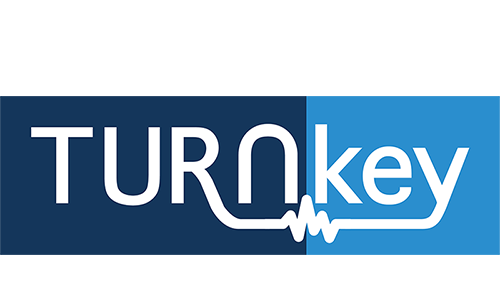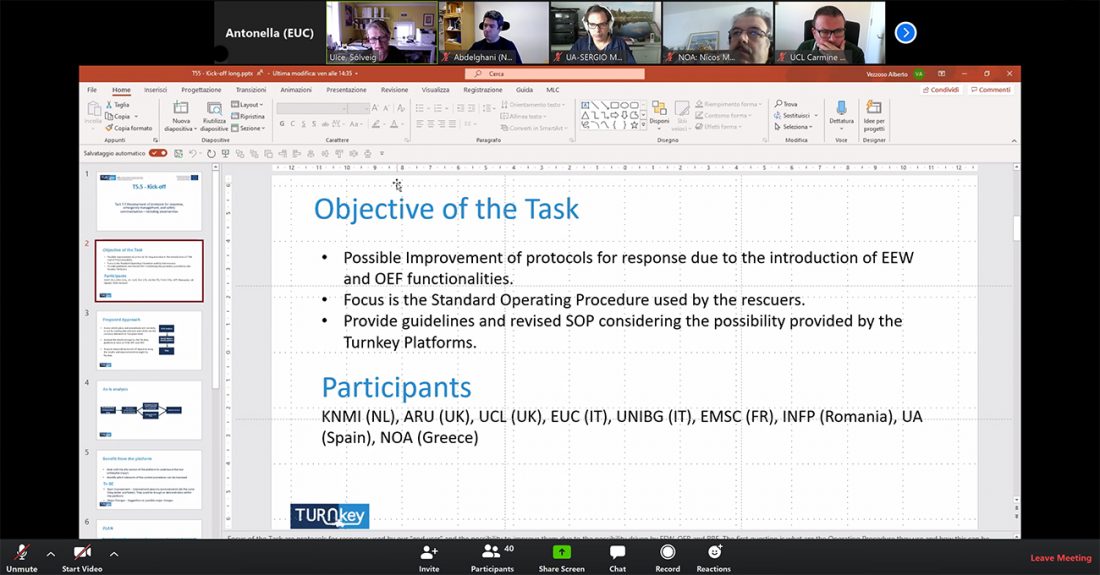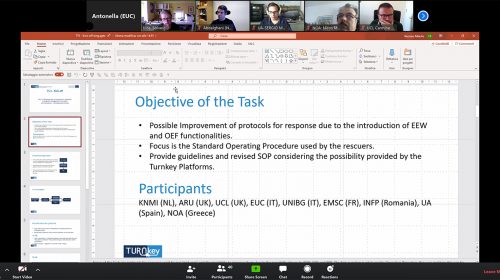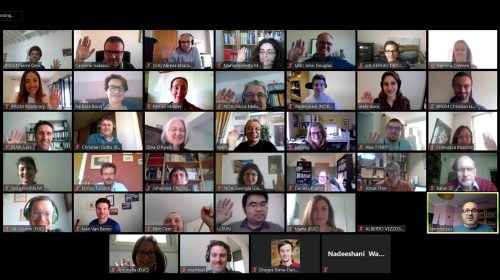Virtual Workshop on WP4 and WP5
Due to the current COVID-19 outbreak, on the 21st and 22nd of April 2020, TURNkey’s partners met together for a virtual workshop on WP4 and WP5. The event was chaired by Bureau de Recherches Géologiques et Minières (BRGM) and University College London (UCL), leaders of WP4 and WP5, respectively. On April 21st the event addressed the topics of WP4 while the topics of WP5 were mostly discussed the day later. In both days, between 30 and 45 people participated in the workshop at various times with all WP4 and WP5 partners well represented. In the following, summaries of what happened for WP4 and WP5 are reported.
State-of-art and future development of WP4
The WP4 has the objective of estimating the physical and systemic vulnerability of residential buildings and critical infrastructure systems, while updating rapid loss predictions in near-real time.
During the first part of the workshop on WP4, the partners attending the event discussed the available exposure data for residential structures and agreed that SERA exposure data will be used as a “baseline”. Nevertheless, if available, data that are more specific for each TURNkey testbed will be also integrated.
Fragility models to estimate damage and deduce losses will be chosen accordingly. In this regard, some review work is progressing to study the critical infrastructure systems in the different testbeds of the project. Specifically, the partners involved in the tasks 4.1 and 4.2 of WP4 are working together to harmonize the framework on the estimation of the functional and systemic vulnerability.
In addition to the models that will be chosen from the technical literature, recordings from instrumented structures will be used in TURNkey to detect the damages in real-time. In this regard, during the second part of the day, the partners discussed the different real-time damage detection tools to be tested and integrated in the TURNkey project. Another source of the real-time damage detection is the crowd-sourcing from in-situ citizen observations. TURNkey will test a new approach to engage the community to share their observations as well as their position on mobile applications (e.g. the Earthquake Network application). At the end, all these elements (i.e. fragility models for physical and functional damage, as well as the different real-time detection tools) will be combined to accurately predict expected losses in a rapid earthquake response context, using an earthquake scenario software such as SELENA. In parallel, a Bayesian framework for the direct integration of field observations will be investigated.
State-of-art and future development of WP5
The WP5 focuses on the development of next-generation decision-support systems (DSSs) for earthquake early warning (EEW), operational earthquake forecasting (OEF), and rapid response to earthquake impacts (RRE).
During the first part of the workshop (Tasks 5.1 and 5.2), various partners discussed the progress that has been made towards developing both qualitative and quantitative community and resilience models, and defining performance indicator metrics. These models and metrics will be used for scenario-specific risk and resilience forecasting, in terms of economic loss, casualties, and business interruption (downtime), which will act as inputs to the various DSSs and enable a comparison of different options for risk mitigation. Metrics and models that have been developed to date leverage a wide variety of tools, including fuzzy cognitive mapping, system dynamics modelling, and Bayesian statistics.
The second part of the workshop examined the methodologies that underpin the proposed EEW/OEF/RRE DSSs (Tasks 5.3 and 5.4), as well as the improvement of emergency response protocols due to their implementation (Task 5.5). The developed DSSs will represent an important paradigm shift in current approaches to issuing early warnings for natural hazards, as they will explicitly account for end-user preferences and incorporate engineering-related (risk and resilience) metrics for more effective risk communication. The proposed DSSs make use of multi-criteria decision-making theory, state-of-the-art tools from performance-based earthquake engineering, and Bayesian statistics.
As a follow-up to this workshop, several further smaller meetings have been planned to better refine specific research issues. For example, a focused working group will address the issue of how the platform will communicate an “all-clear” alert after an event, when the risk of an aftershock is sufficiently low.




